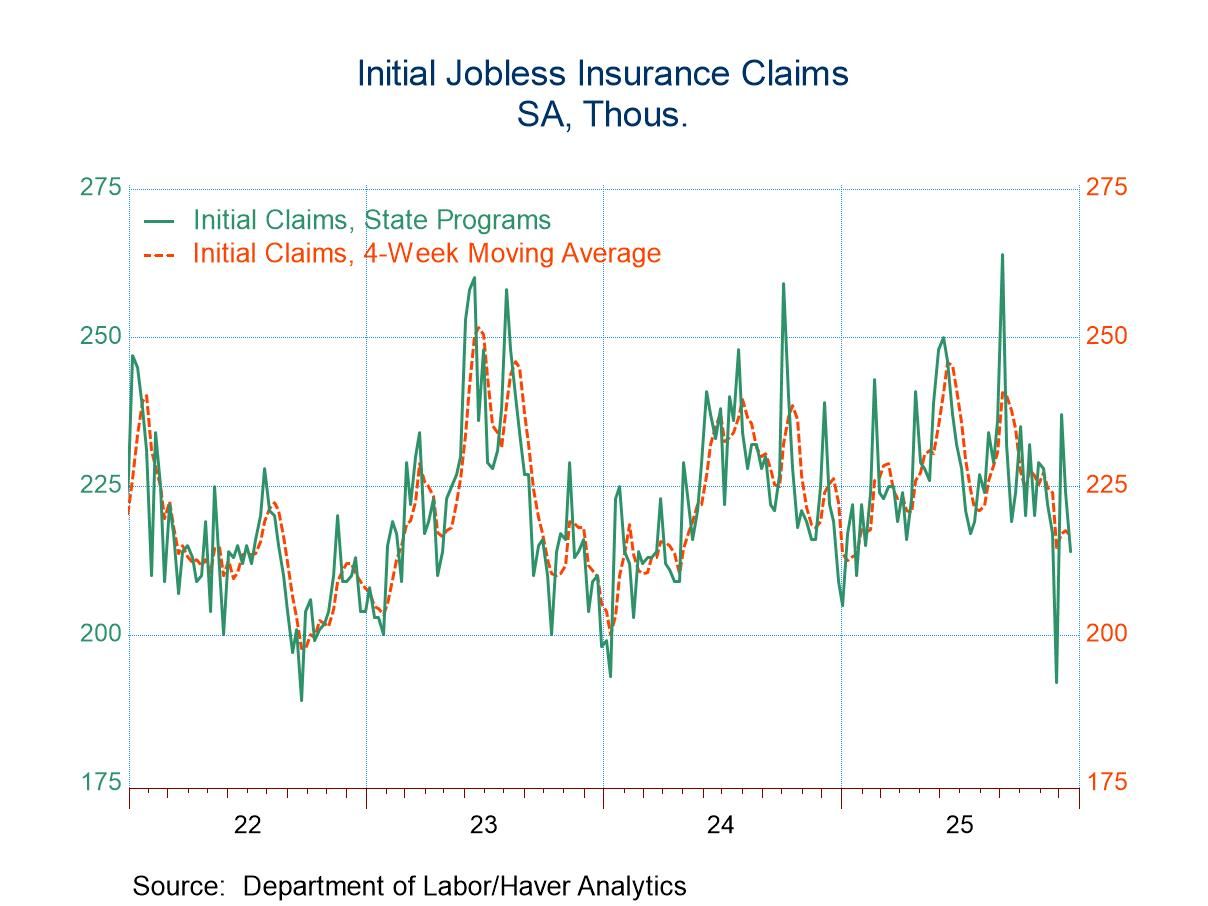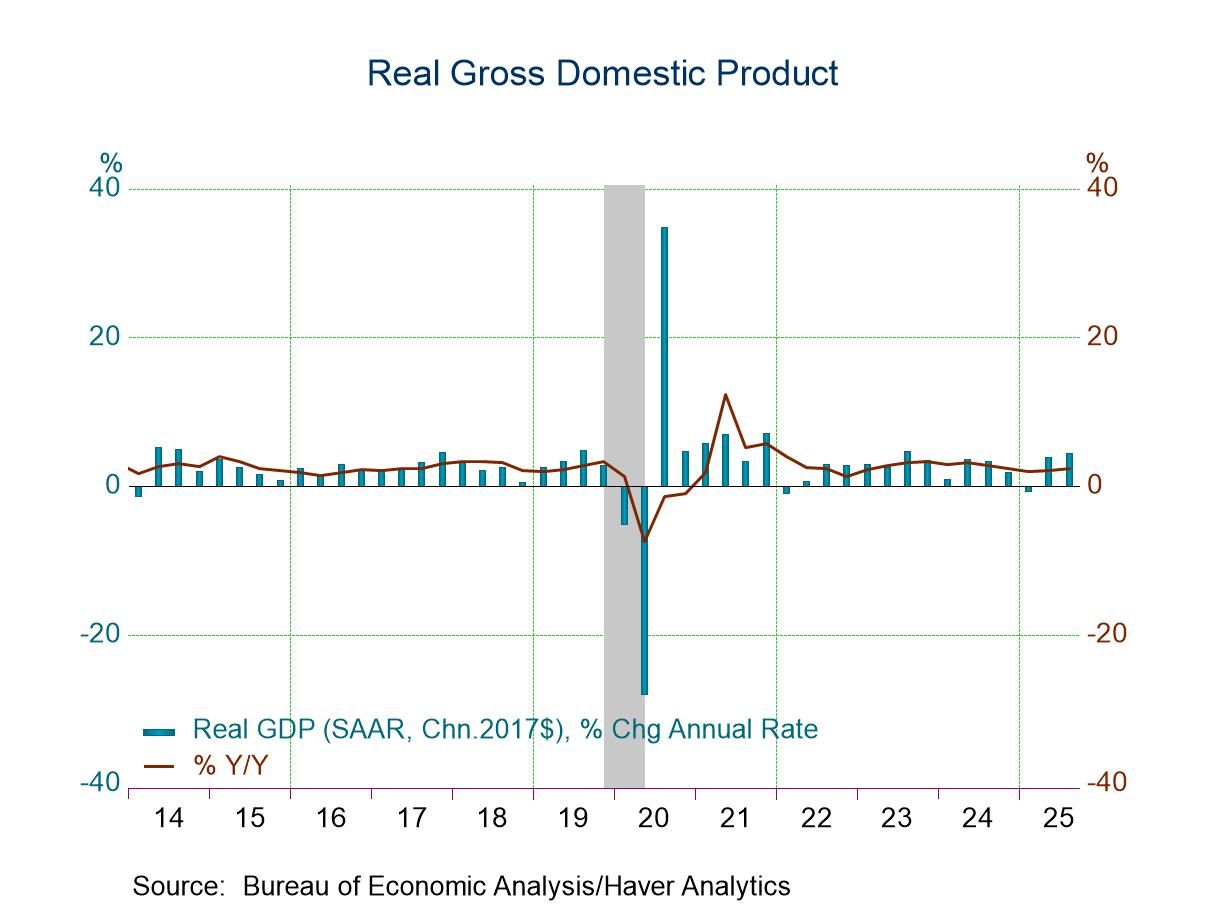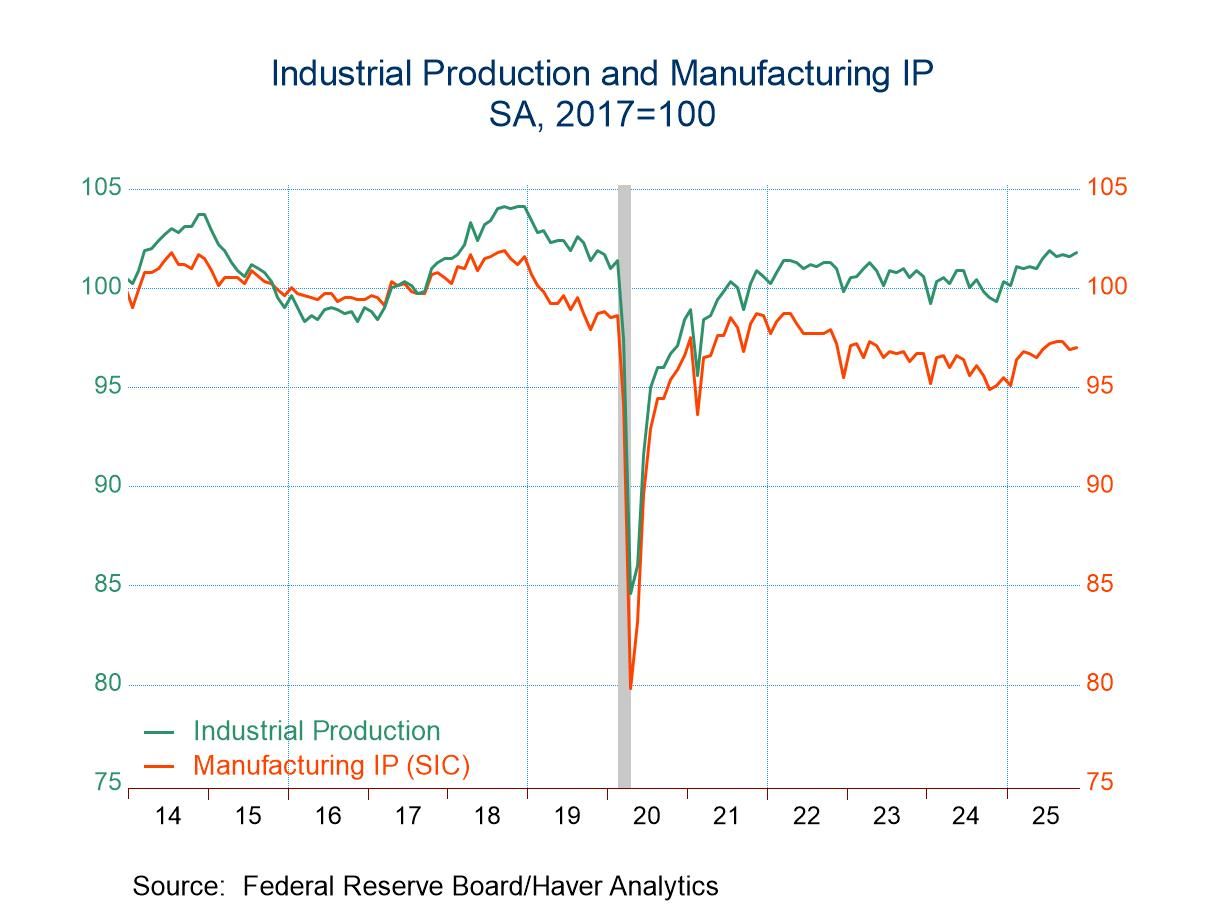Kansas City Fed Manufacturing Index Worsens to Negative Territory in October
Summary
- Index decreases to -7 in Oct., lowest since May '20, from 1 in Sept., w/ production (-22), shipments (-18) and new orders (-16) in negative territory.
- Employment drops to its lowest level since Nov. '20, albeit at a positive level.
- Inflation remains a major concern; price indexes decline to still-high levels.
- Expectations for future activity deteriorate, entering negative territory for the first time since Apr. '20.


The Federal Reserve Bank of Kansas City reported that its manufacturing sector business activity index plunged to -7 in October from 1 in September and 3 in August. The October reading was well below a record-high 37 in March and 28 last October, indicating Tenth District manufacturing activity decelerated further this month to the lowest negative level since May 2020’s minus 16 reading. "The slower pace in factory growth in October was driven by decreased activity in computer and electronic, wood, primary metals, and plastics and rubber manufacturing," the Kansas City Fed reported. The ISM-adjusted index calculated by Haver Analytics fell to a contraction-level 49.0 (NSA) in October, the lowest level since May 2020, from 50.7 in September and 65.3 last October.
The production index plunged to -22 in October, the lowest level since May 2020, from 2 in September and 19 last October. The new orders index declined to -16 this month from -11 in September, registering the fifth consecutive negative reading and down from 20 last October. A steady 24% of respondents reported orders gains while 33% reported declines. The shipments index fell back to a negative reading of -18 this month, the lowest since May 2020, from zero in September; it remained down from a record-high 46 in March and 21 last October. The employment index declined to 3 in October, the lowest level since November 2020, from 10 in September and 32 last October. Twenty-six percent of respondents reported increases in the number of employees while 20% reported decreases.
The supplier delivery times index ticked up to -1 in October, the first monthly increase since March, from -2 in September. It was well below 49 last October. The order backlog index slid to -19 this month, the lowest reading since June 2020, down from -4 in September and 21 last October.
"Prices paid for commodities still through the roof. No relief in sight,” comments in the latest survey showed. The prices received index for finished products fell to a still-high 13 in October, the lowest reading since December 2020, from 27 in September and 45 last October. Thirty-two percent of respondents reported higher prices received while 16% reported price declines. The raw materials index fell to 26 this month from 41 in September; it was well below 81 last October and a record-high 88 last May.
Expectations for future activity worsened in October to a negative level. The expectations index for six months ahead dropped to -1 this month, the lowest level since April 2020, from 9 in September. Down for the third straight month in October, the expectations indexes for new orders (-14) and production (-1) entered negative territory for the first time since April 2020. The expectations indexes for employment and shipments fell for the third successive month in October but remained in positive territory. Expected capital expenditures dropped to 5 this month, the lowest level since December 2020, from 11 in September. Expectations for future raw materials prices fell back to 35 in October from 58 in September, registering the seventh m/m fall in eight months, while expected finished goods prices declined to 43 this month after holding at 51.
The latest survey was conducted for a five-day period from October 19-24, 2022 and included 102 responses from plants in Colorado, Kansas, Nebraska, Oklahoma, Wyoming, northern New Mexico, and western Missouri.
The series dates back to July 2001. The diffusion indexes are calculated as the percentage of total respondents reporting increases minus the percentage reporting declines. Data for the Kansas City Fed Survey can be found in Haver's SURVEYS database.


Winnie Tapasanun
AuthorMore in Author Profile »Winnie Tapasanun has been working for Haver Analytics since 2013. She has 20+ years of working in the financial services industry. As Vice President and Economic Analyst at Globicus International, Inc., a New York-based company specializing in macroeconomics and financial markets, Winnie oversaw the company’s business operations, managed financial and economic data, and wrote daily reports on macroeconomics and financial markets. Prior to working at Globicus, she was Investment Promotion Officer at the New York Office of the Thailand Board of Investment (BOI) where she wrote monthly reports on the U.S. economic outlook, wrote reports on the outlook of key U.S. industries, and assisted investors on doing business and investment in Thailand. Prior to joining the BOI, she was Adjunct Professor teaching International Political Economy/International Relations at the City College of New York. Prior to her teaching experience at the CCNY, Winnie successfully completed internships at the United Nations. Winnie holds an MA Degree from Long Island University, New York. She also did graduate studies at Columbia University in the City of New York and doctoral requirements at the Graduate Center of the City University of New York. Her areas of specialization are international political economy, macroeconomics, financial markets, political economy, international relations, and business development/business strategy. Her regional specialization includes, but not limited to, Southeast Asia and East Asia. Winnie is bilingual in English and Thai with competency in French. She loves to travel (~30 countries) to better understand each country’s unique economy, fascinating culture and people as well as the global economy as a whole.






